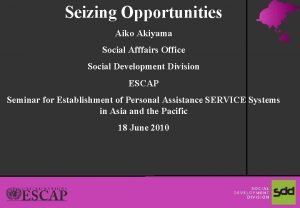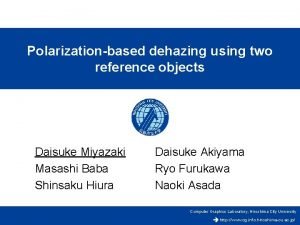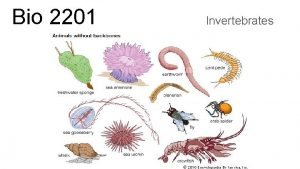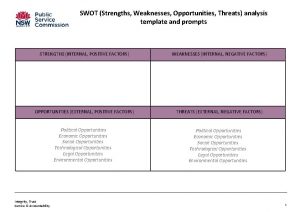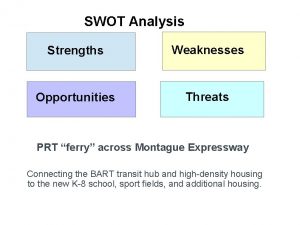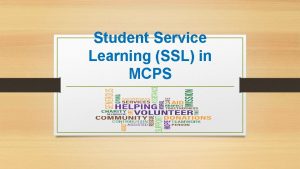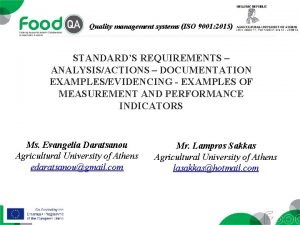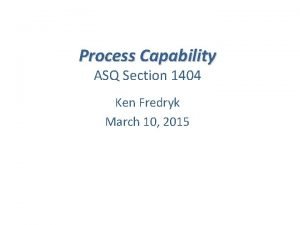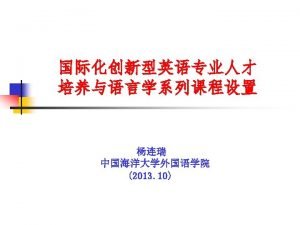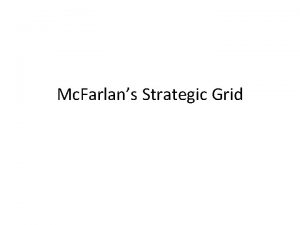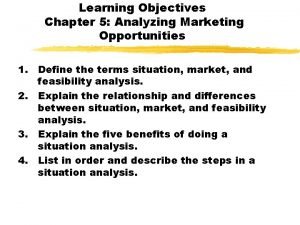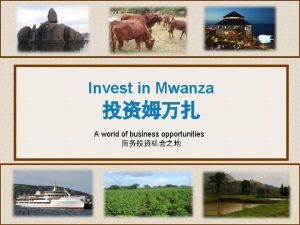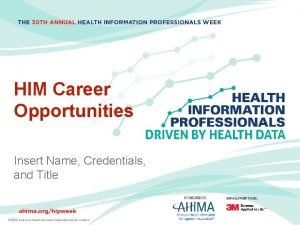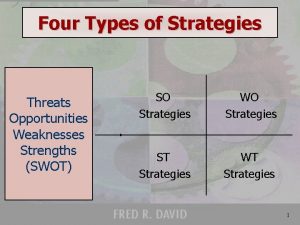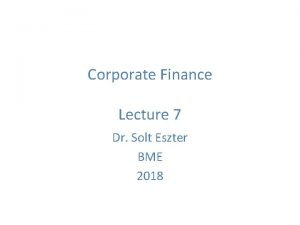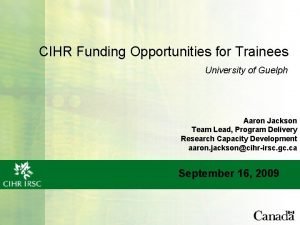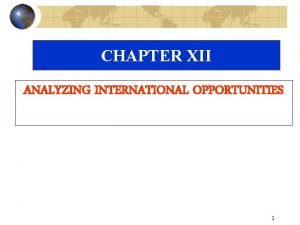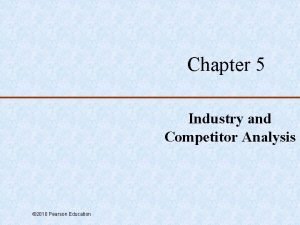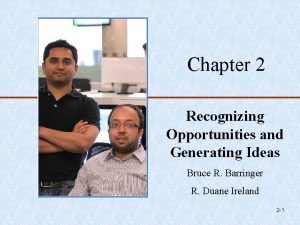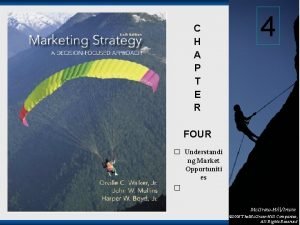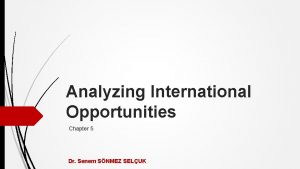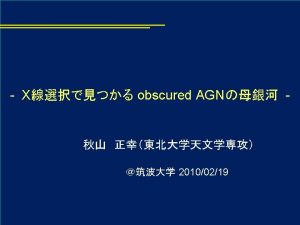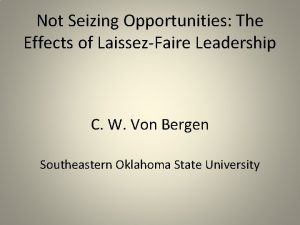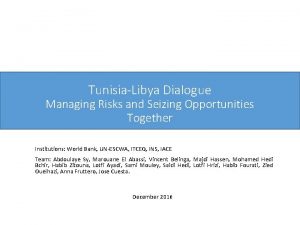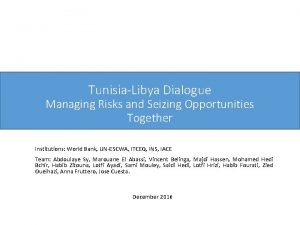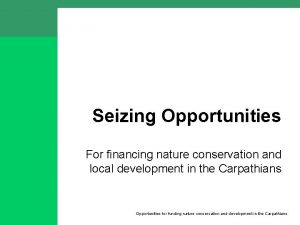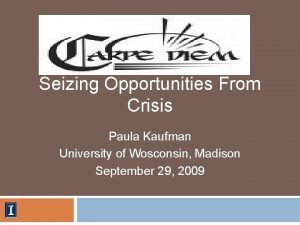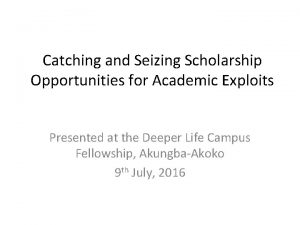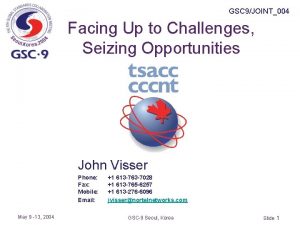Seizing Opportunities Aiko Akiyama Social Afffairs Office Social



































- Slides: 35

Seizing Opportunities Aiko Akiyama Social Afffairs Office Social Development Division ESCAP Seminar for Establishment of Personal Assistance SERVICE Systems in Asia and the Pacific 18 June 2010 1

Purpose of the presentation q. Review the international and regional documents on disability in the light of independent living of persons with disabilities. q Discuss how the participants can use these documents to enhance independent living of persons with disabilities and to establish PA system in Asian and the Pacific.

Before introducing the main topic…. . q Introducing ESCAP.


What is ESCAP? Economic and Social Commission for Asia and the Ø Parliament of Asia and the Pacific: the only Pacific intergovernmental forum for all countries and territories of the Asian and Pacific region, dealing with Economic and Social Development Issues. Ø 53 members and 9 associate members, representing approximately 62 percent of world’s population (4, 1 billion). Ø Inclusive and sustainable development


ESCAP Disability q Most successful projects Programme in ESCAP q Regional engine for advocating, researching and conduct capacitybuidling on the rights of persons with disabilities.

Unique regional decade on disability Biwako, MDGs and CRPD 1983 1993 2003 2013 IDDP 1 ST APDDP 2 nd APDDP 2023

Biwako and CRPD Biwako, MDGs and CRPD 2000 2003 2007 2008 2 nd APDDP Biwako Plus Five CRPD 2012 2015

Nature of the three instruments Convention BMF B+5 Legality binding Non-binding Focus Global ESCAP region Disability-specific policy and action document Human rights treaty Time Eternal once effective Bound to 2012

Biwako and Biwako Plus Five Biwako, MDGs and CRPD 2000 2003 2007 2012 Biwako Plus Five Guiding policy action document formulated by all the stakeholders (DPOs) endorsed by Member states of ESCAP

Focus of the Biwako Millennium Framework and the Biwako Plus Five-social model approach to disability

BMF, B+5, 7 priority areas Early detection, early intervention and education Poverty alleviation through capacitybuilding, social security and sustainable livelihood programmes Training and employment, including selfemployment Access to built environments and public transport Persons with disabilities, family organizations Women with disabilities Access to information and communications, including information, communications and assistive technologies

BMF, B+5 strategies Strengthening comprehensive community-based approaches to disability issues Collaboration within the UN system, with the private sector, media, local government Reinforcing a rights- Promoting an enabling based approach to environment and disability issues strengthening effective mechanisms for policy formulation and implementation Improving the availability and quality of 7 Priority data and other areas information on disabilities Subregional, interregional collaboration Promoting disabilityinclusive development

Biwako/Biwako Plus Five -Relevance to independent living q Target 1: Governments, funding agencies, NGOs by 2004, establishes policies with the requisite resources to support organizations of persons with disabilities. q Action 2 under the priority area on poverty alleviation: government should allocate adequate rural development and poverty alleviation funds towards services for the benefit of persons with disabilities.

Biwako/Biwako Plus Five -Relevance to independent living q Action 22 of the biwako plus five under the poverty alleviation: Governments should review existing social security policies and practices and modify them-----the provision of basic assistive devices that meet the needs of persons with disabilities as well as any personal assistance needed should be promoted. q Strategy 10: Governments should promote community-based approach immediately. Community-based rehabilitation (CBR) should be modeled on the independent living concept, which includes peer counseling.

Convention on the Rights of Persons with Biwako, MDGs and CRPD Disabilities (CRPD) 2008 CRPD

CRPD -overview A minimum standard which does not undermine other international or national provisions which are more conducive to the realization of the rights of persons with disabilities (art 4(4)) n National actions Reference: Andrew Byrnes (2007; 2008) CRPD

CRPD -structure q Introductory: Preamble and arts 1 -8, 11 q Civil and political rights: arts 10, 12 -23, 29 q Economic, social and cultural rights: arts 24 -28, 30 q Other – statistics, international cooperation, and national implementatio and monitoring: arts 31 -33 q International monitoring – Committee on the Rights of Persons with Disabilities, etc: arts 34 -40 q Miscellaneous and procedural: arts 41 -50

CRPD Optional Protocol-structure q Individual communications procedure: arts 1 -5 q Inquiry procedure: arts 6 -7 q Miscellaneous and procedural – arts 9 -18

CRPD-highlights 1) q Social model of disability and a rights-based response to disability discrimination are central to the Convention: Preamble (para (e)) recognizes that “disability is an evolving concept and that disability results from the interaction between persons with impairments and attitudinal and environmental barriers that hinders their full and effective participation in society on an equal basis with others” Article 1 provides: “Persons with disabilities include those who have long-term physical, mental, intellectual or sensory impairments which in interaction with various barriers may hinder their full and effective participation in society on an equal basis with others. ”

CRPD –highlights-”innovative” rights 2) q Accessibility (art 9) -- wide-ranging right to ensure equal access to “to the physical environment, to transportation, to information and communications, including information and communications technologies and systems, and to other facilities and services open or provided to the public, both in urban and in rural areas. ” q Right of living independently and to be included in the community (art 19) q Right to personal mobility (art 20)

CRPD –highlights 3) “Communication” is broadly defined in article 2 to include: “languages, display of text, Braille, tactile communication, large print, accessible multimedia as well as written, audio, plain-language, human-reader and augmentative and alternative modes, means and formats of communication, including accessible information and communication technology”. q Obligation on State to provide information to persons with disabilities in accessible formats, to accept and facilitate the use of sign languages etc in official interactions, and to urge private entities to provide information and services in accessible and usable formats q Obligation on States parties to take appropriate measures to recognize and promote the use of sign languages

CRPD –highlights 4) International cooperation (art 32) q First UN human rights treaty to contain a detailed provision on international cooperation q States recognize the importance of international cooperation – bilateral and multilateral – and appropriate measures could include: § Ensuring that international development programmes are inclusive of and accessible to persons with disabilities; § Facilitating and supporting capacity-building § Facilitating cooperation in research and access to scientific and technical knowledge; § Providing, as appropriate, technical and economic assistance q Applies to South-South cooperation, as well as to North-South and South-North cooperation q A State may not justify a failure to carry out its obligations under the Convention by claiming that the resulting international cooperation has not been forthcoming

CRPD –highlights 5) National implementation and monitoring (art 33) Three elements: q Designation of focal points within government in relation to implementation and consideration of establishment of a coordination mechanism q Identification or establishment of a framework, including one or more national institutions established with regard to the Paris Principles, to promote, protect and monitor implementation of the Convention q Participation of civil society, in particular persons with disabilities and their representative organizations in monitoring the implementation of the Convention

Convention substantive articles Education Health Protecting the integrity of a person Participation in public and political life Adequate standard of living and social protection Work and employment Children with disabilities Women with disabilities Respect for home and family Accessibility Personal Mobility Living independently and being included in community Access to cultural life, recreation, leisure and sport Freedom of expression and opinion, access to information

Convention substantive articles Situation of risk and humanitarian emergencies Equal recognition before the law Respect for privacy Right to Life Children with disabilities Women with disabilities Access to justice Freedom from torture or cruel, inhuman degrading treatment Freedom from exploitation, violence and abuse

Convention Awareness raising Substantive articles International Cooperation Children with disabilities Women with disabilities Statistics and data collection

CRPD-Relevance to independent living p Preamble n) and article 3 on principle a) : autonomy, freedom to make one’s own choices, and independence of persons.

CRPD-Relevance to independent living p Article 19 on living independently and being included in the community a): persons with disabilities have the opportunity to choose their place of residence and where and with whom they live on equal basis with others and are not obliged to live in a particular living arrangement. p b): persons with disabilities have access to a range of inhome , residential and other community support services, including personal assistance necessary to support living and inclusion in the community and to prevent isolation or segregation from the community. p.

CRPD-Relevance to independent living p Article 15 on the freedom from torture or cruel, inhuman or degrading treatment or punishment p Article 17 on the integrity of the person. p Article 22 on the respect for privacy.

How do we promote the independent living, personal assistance? By : p Pushing the harmonization of the CRPD with the domestic legislation. p Mainstreaming disability into the development agenda such as MDGs. p Showcasing the model practices in developing countries.

Reality? q Majority of the countries do not have laws, policies and regulations to support independent living, provision of personal assistance. q Concept of personal assistance is relatively new in the region as a whole. q Personal assistance schemes might be implemented on using other existing budget lines.

Biwako and the CRPD promote good practice promotion and international/regional cooperation p. Biwako strategy on subregional, regional collaboration, establishment of center of excellence. p. CRPD article 32 on international cooperation; best practice promotion, research.

Conclusion: legal advocacy, awareness raising, Let’s act right now! best practice promotion, seizing opportunities now. legal advocacy, awareness raising, best practice promotion……….
 Aiko akiyama
Aiko akiyama Daisuke akiyama
Daisuke akiyama Nobody jhene aiko
Nobody jhene aiko Best practices for seizing electronic evidence
Best practices for seizing electronic evidence Invertebrate digestive system
Invertebrate digestive system Seizing the dawn ddo
Seizing the dawn ddo Opportunities and challenges of informational
Opportunities and challenges of informational Difference between office location and office layout
Difference between office location and office layout Social thinking and social influence
Social thinking and social influence Social thinking social influence social relations
Social thinking social influence social relations Social security office
Social security office Opportunities for economic development in the sahara desert
Opportunities for economic development in the sahara desert Strength weakness opportunity threat template
Strength weakness opportunity threat template Strengths opportunities threats weaknesses
Strengths opportunities threats weaknesses Ssl opportunities mcps
Ssl opportunities mcps Actions to address risks and opportunities
Actions to address risks and opportunities Sigma
Sigma Dpmo formula
Dpmo formula Maximize learning opportunities
Maximize learning opportunities Strategic opportunities grid
Strategic opportunities grid Chapter 37 identifying career opportunities
Chapter 37 identifying career opportunities Analyzing marketing opportunities
Analyzing marketing opportunities Business opportunities in mwanza
Business opportunities in mwanza Him career
Him career For weakness
For weakness Pvgo
Pvgo Cihr funding opportunities
Cihr funding opportunities Analyzing international opportunities
Analyzing international opportunities Competitive analysis grid
Competitive analysis grid Generation of new entry opportunity in entrepreneurship
Generation of new entry opportunity in entrepreneurship Observing trends in entrepreneurship example
Observing trends in entrepreneurship example Identifying business opportunities
Identifying business opportunities Seven domains of attractive opportunities
Seven domains of attractive opportunities Bosnia investment opportunities
Bosnia investment opportunities Analyzing international opportunities
Analyzing international opportunities Opportunities and threats of a bakery
Opportunities and threats of a bakery
